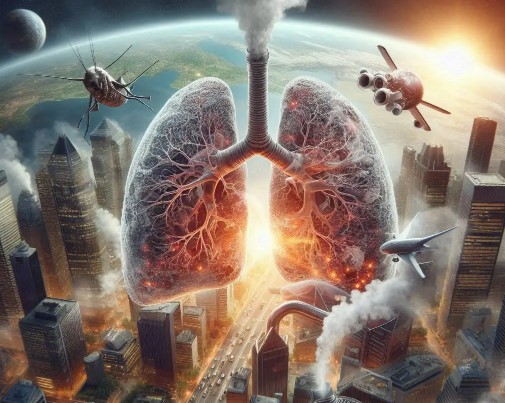A groundbreaking study by researchers at the Spanish National Cancer Research Center (CNIO) has uncovered a previously unknown cause of lung cancer in non-smokers: polluted air. This finding, published in the esteemed journal Nature, provides the first genomic evidence for the connection between environmental pollution and the development of lung cancer in individuals who have never smoked. Previously, a quarter of all lung cancer cases in non-smokers remained a mystery.
The Search for the Hidden Cause
While previous epidemiological studies suggested a link between air pollution and lung cancer in non-smokers, definitive proof of how this exposure damages DNA was lacking. The current research, led by Ludmil Alexandrov (University of California San Diego, USA) and Maria Teresa Landi (National Cancer Institute, USA), along with CNIO scientists Pilar Gallego and Marcos Díaz-Gay, closes this gap. It demonstrates that environmental pollution indeed causes DNA damage that can lead to cancer.
A Disturbing Global Trend
The number of lung cancer cases in non-smokers is alarmingly increasing worldwide. Asian women are particularly affected, with East Asia showing a higher prevalence than Western countries. Ludmil Alexandrov emphasizes: “We are seeing this disturbing trend that those who have never smoked are developing more and more lung cancer, and we don’t understand why.” Maria Teresa Landi, an epidemiologist at the NCI, adds: “It is an urgent and growing global problem.”
Genomic Insights from 28 Regions
Most previous lung cancer studies did not adequately differentiate between smokers and non-smokers, which hindered the identification of specific risk factors. This new study collected data from 871 non-smokers from 28 regions in Africa, Asia, Europe, and North America with varying levels of air pollution. By sequencing the entire genome, researchers were able to identify mutation signatures – molecular fingerprints of past environmental exposures.
The results are alarming: people living in more polluted environments accumulated a significantly higher number of mutations in their lung tumors – 3.9 times more smoking-related mutations and 76 percent more age-related mutations. Furthermore, these individuals showed shorter telomeres, a sign of accelerated cellular aging. Marcos Díaz Gay, head of the new Digital Genomics Group at CNIO and first author of the study, explains: “The greater the pollution, the greater the number of mutations, which does not mean that all mutations cause cancer, but some can be related to the carcinogenic process. And the more mutations there are, the more likely it is that one of them is bad and cancer develops.”
Other Environmental Hazards and Unexpected Discoveries
The study identified another environmental risk: aristolochic acid, a carcinogen found in certain traditional medicinal herbs. This acid was responsible for a specific mutation signature found primarily in non-smoking patients in Taiwan. Although previously linked to other cancers, this is the first time it has been associated with lung cancer.
Additionally, the research group discovered a new mutation signature of unknown origin that was more common in non-smokers compared to smokers and did not correlate with air pollution or other known environmental exposures. “We observed it in most cases in this study, but we still don’t know why. This is something completely different, and it opens up a whole new area of research,” admits Alexandrov. Díaz-Gay adds: “This mutation signature is very widespread: it is present in 75% of cases in non-smokers, and only 27% in smokers, but although we cannot determine its origin today, it is the one that causes the most mutations in non-smokers.”
Future studies will include lung cancer cases in non-smokers from Latin America, the Middle East, and further regions of Africa. In addition, potential risks such as marijuana use, vapes, and radon gas will be analyzed.




